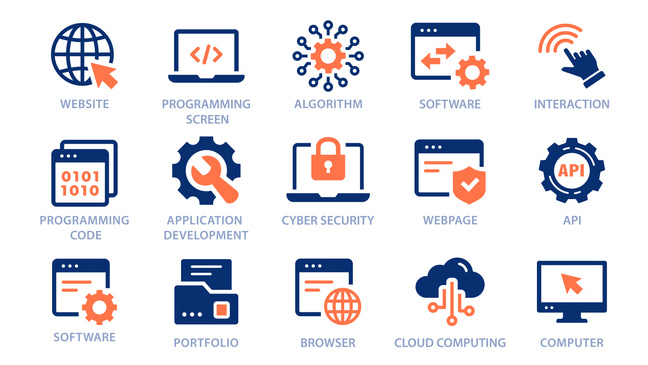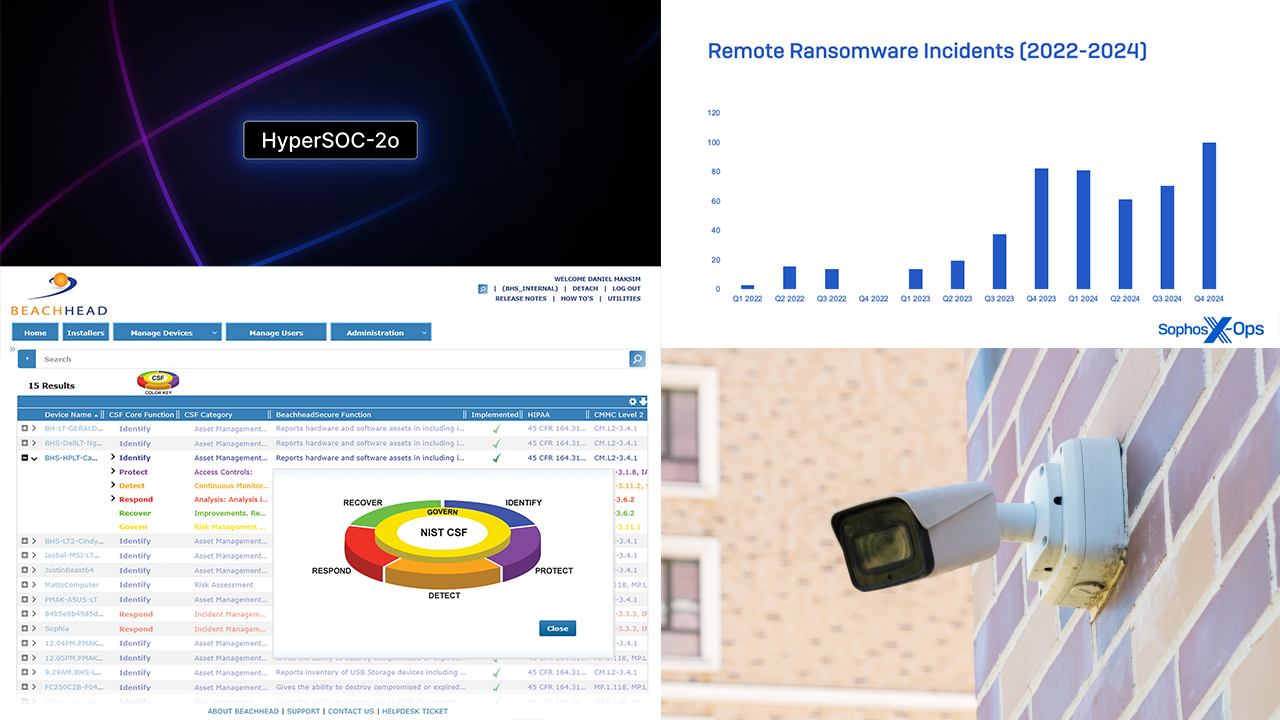Expanding your MSP’s service portfolio can boost revenue, improve client retention, and help you stay competitive. However, it’s crucial to assess your team’s capabilities, client demand, and operational capacity before taking the leap. This checklist will guide you in determining whether adding new services is the right move for your MSP, providing insight into key considerations, immediate impacts, and long-term benefits.
Checklist Questions:
1. Do my clients frequently request additional services that I don’t currently offer?
- Yes / No
- Analyze client requests and unmet needs.
- Specifics to consider:
-
- Track client feedback and requests over time to identify service gaps. Are clients asking for services like cybersecurity, VoIP, cloud management, or compliance that you don’t currently provide?
-
- Evaluate how often you refer clients to third-party providers for these services—this could be revenue that your MSP is missing out on.
- Impacts on current business:
-
- Ignoring frequent client requests could result in missed opportunities to upsell or cross-sell, potentially leading clients to seek out other MSPs that offer these services.
-
- You may also lose control over the client relationship when they rely on external providers for additional services.
- Future benefits:
-
- Adding in-demand services can deepen client relationships, enhance retention, and make your MSP a one-stop shop, reducing the risk of client churn.
-
- It positions you as a comprehensive solution provider, improving your competitive edge and increasing revenue potential.
2. Can my team support the additional workload with current staffing levels?
- Yes / No
- Evaluate current team capacity and skill sets.
- Specifics to consider:
-
- Review your current team’s bandwidth—how many hours are they working per week, and are there signs of burnout or inefficiencies?
-
- Analyze whether existing staff have the skill sets to handle the new service, or if additional training or hiring would be required.
- Impacts on current business:
-
- Without sufficient staffing, offering new services could lead to overburdened employees, slower response times, and a decline in overall service quality.
-
- Stretching your team too thin can also lead to employee dissatisfaction and higher turnover, which will increase costs in the long run.
- Future benefits:
-
- Expanding services with a well-prepared team can boost productivity and improve client satisfaction without overwhelming your current staff.
-
- It ensures you can handle more clients or higher service demand as your offerings grow, providing a foundation for scalable growth.
3. Would adding this service align with my MSP’s core strengths and competencies?
- Yes / No
- Ensure new services fit within your existing expertise.
- Specifics to consider:
-
- Evaluate how well the new service aligns with your MSP’s core areas of expertise. For example, if you specialize in network security, does adding cloud backup align with your competencies?
-
- Consider if the new service complements your existing services or requires significant investment in new expertise.
- Impacts on current business:
-
- Expanding beyond your core strengths could dilute your brand’s focus and expertise, leading to inconsistent service delivery or a negative impact on your reputation.
-
- Offering services that your team isn’t well-equipped to manage could result in poor client outcomes and damage to client relationships.
- Future benefits:
-
- Expanding services that align with your strengths can help you leverage your team’s existing skills, improving efficiency and client trust.
-
- It enables your MSP to become an expert in a niche, which can attract new clients looking for specialized knowledge.
4. Will this service improve client retention or acquisition?
- Yes / No
- Determine whether the service adds value that improves client stickiness or attracts new business.
- Specifics to consider:
-
- Look at current client churn rates—are clients leaving because you don’t offer certain services? Conduct client surveys to identify gaps that are leading to dissatisfaction.
-
- Analyze your market—does adding this service align with demand in your geographic or vertical focus?
- Impacts on current business:
-
- Not offering in-demand services could lead to higher client churn, as clients seek MSPs that meet all their needs.
-
- Focusing solely on client retention without considering how new services can attract new business could stagnate growth.
- Future benefits:
-
- Offering additional services that improve client stickiness can lower churn rates, improving client lifetime value and reducing the need for constant new client acquisition.
-
- The right service expansion can open doors to new market segments, attracting clients who are specifically looking for the service you’ve added.
5. Are there scalable solutions or partners I can leverage to offer this new service?
- Yes / No
- Explore potential vendor partnerships or outsourced solutions.
- Specifics to consider:
-
- Identify existing vendors or partners who could provide white-label or co-managed solutions, allowing you to offer new services without developing them from scratch.
-
- Explore whether outsourcing or partnering with specialized vendors could reduce your internal burden while offering high-quality service.
- Impacts on current business:
-
- Outsourcing or partnering can quickly expand your service portfolio without requiring substantial internal investment. However, poor coordination with external providers can lead to quality control issues or communication breakdowns.
-
- Relying too heavily on third-party partners can also lead to reduced profit margins if service costs rise.
- Future benefits:
-
- Partnering with established providers allows you to scale your services more rapidly, creating new revenue streams without significant overhead.
-
- Successful partnerships can also help you deliver specialized services (e.g., cybersecurity, compliance) with minimal resource allocation, allowing your team to focus on core competencies.
6. Will I need to invest in new tools, certifications, or training for my staff?
- Yes / No
- Consider the financial and time investments needed to support this new offering.
- Specifics to consider:
-
- Assess the tools or certifications required to offer the new service effectively (e.g., cybersecurity certifications, cloud management tools).
-
- Evaluate the cost and time required for staff training or certification, including the disruption it might cause to current workflows.
- Impacts on current business:
-
- Investing in tools or training without proper planning could stretch your resources and negatively impact day-to-day operations.
-
- Adding new services that require heavy upskilling could result in delays in service delivery, as staff may take time to adapt to new processes.
- Future benefits:
-
- Proper investment in certifications and training can increase your MSP’s credibility and differentiate you from competitors, especially in niche services like compliance or advanced security.
-
- New tools and certifications can enhance your team’s efficiency and expertise, enabling you to deliver high-quality services with confidence.
7. Do I have the right tools and processes in place to manage these new services effectively?
- Yes / No
- Review your PSA, RMM, and other tools to ensure they can support the new services.
- Specifics to consider:
-
- Assess whether your current tools (PSA, RMM, CRM) can integrate the new service efficiently. Will these tools support automation, monitoring, or billing for the added service?
-
- Consider if existing processes (e.g., ticketing, onboarding, reporting) are scalable and adaptable to handle additional service types.
- Impacts on current business:
-
- Without the right tools, you risk inefficiencies in managing the new service, leading to slower response times, higher operational costs, or client dissatisfaction.
-
- Failing to streamline workflows before adding services can cause confusion and workflow bottlenecks, disrupting your existing services.
- Future benefits:
-
- Having the right tools and processes in place will enable seamless service delivery, helping you manage more clients without significantly increasing costs or complexity.
-
- Efficient workflows allow for faster onboarding of new services, improving client satisfaction and enabling quicker expansion into new markets.
8. When was the last time I reviewed our service portfolio for gaps or expansion opportunities?
- Date: __________
- Plan for regular reviews, quarterly or annually, to assess service gaps and opportunities.
- Specifics to consider:
-
- Review your service portfolio at least annually to ensure it aligns with market demands and client needs. Conduct competitive analysis to see if there are services your competitors are offering that you are not.
- Impacts on current business:
-
- Without regular reviews, you may miss opportunities to diversify your offerings or fall behind in service innovation compared to competitors.
-
- An outdated service portfolio could result in missed revenue opportunities and client dissatisfaction as their needs evolve.
- Future benefits:
-
- Regular reviews keep your service offerings relevant, ensuring that you stay ahead of market trends and meet the evolving needs of your clients.
-
- Consistent evaluation of your portfolio can help you identify high-growth opportunities and ensure your MSP stays competitive.
Decision Outcome:
- If most of your answers are Yes, expanding your service offerings is likely to provide both revenue and retention benefits. You are well-positioned to take on additional services without overburdening your team or impacting service quality.
- If your answers are mostly No, focus on optimizing your current services, strengthening your infrastructure, and upskilling your team before pursuing expansion. This will ensure that any future growth is sustainable and profitable.
Conclusion:
Expanding your service offerings can drive growth, improve client retention, and differentiate your MSP. By carefully evaluating your current capabilities, client demand, and operational readiness, you can ensure that any new services you offer will strengthen your business without overextending your resources. Regularly reviewing your service portfolio ensures you remain agile and responsive to market trends, positioning your MSP for long-term success.
ChannelPro has created this checklist to help busy MSPs streamline their decision-making process. This checklist offers a starting point for evaluating key business choices, saving time and providing clarity. While this checklist is designed to guide you through important considerations, we encourage you to seek additional references and professional advice to ensure fully informed decisions.
Images: iStock














